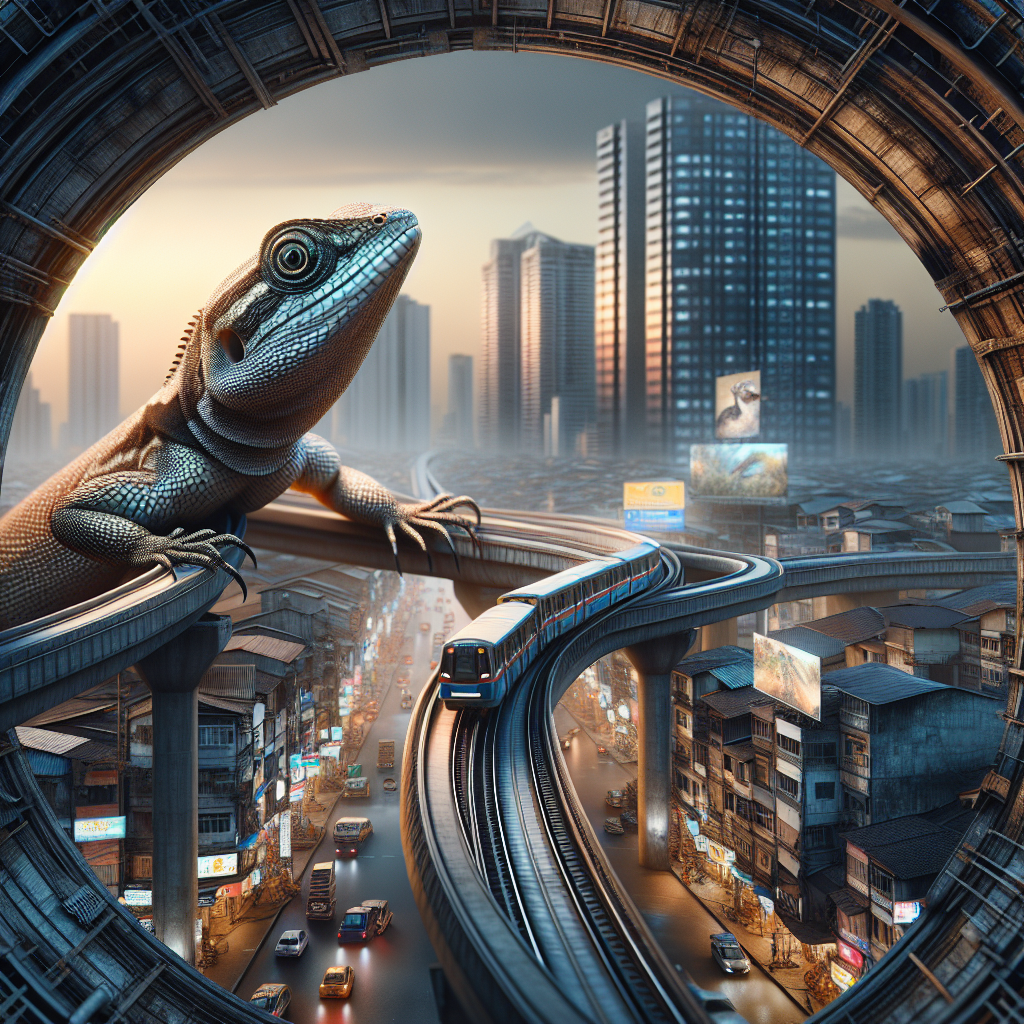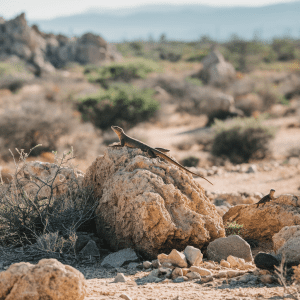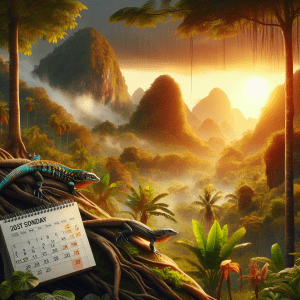Introduction: Urban Lizard Habitats in Asia
Urban lizard habitats in Asia are a captivating subject that never fails to intrigue nature enthusiasts. Picture this: strolling through a bustling city street, and suddenly, you spot a vibrant lizard basking in the sun. It’s a magical moment, witnessing these creatures adapt and thrive in urban environments.
Asian cities are teeming with a diverse array of lizard species, each with its unique characteristics and behaviors. From the agile Tokay geckos to the elusive flying dragons, these reptiles add a touch of wilderness to the concrete jungle.
One fascinating fact about urban lizards in Asia is their remarkable ability to camouflage themselves amidst the urban landscape. Their natural camouflage skills are a testament to their survival instincts in a rapidly changing environment.
Despite their impressive adaptations, urban lizards face challenges such as habitat loss and pollution. Understanding these challenges is crucial in implementing effective conservation efforts to protect these remarkable creatures.
As we delve deeper into the world of urban lizard habitats in Asia, let’s ponder this question: How can we strike a balance between urban development and preserving the natural habitats of these fascinating reptiles?
By shedding light on the importance of urban lizards in Asian ecosystems, we can enhance awareness and appreciation for these often-overlooked creatures. So, next time you’re in an Asian city, keep an eye out for these urban dwellers—they might just surprise you with their resilience and beauty.
Types of Lizards Found in Asian Cities
Urban lizards in Asia are a fascinating bunch, each with its unique characteristics and quirks.
These creatures have adapted remarkably well to city life, blending into concrete jungles effortlessly.
From the agile geckos scurrying up walls to the majestic water dragons basking in the sun, Asian urban landscapes are teeming with diverse lizard species.
One interesting fact about urban lizards in Asia is their ability to camouflage themselves in urban environments.
Their coloration and behavior often mimic their surroundings, allowing them to remain hidden from predators and humans alike.
Imagine walking down a bustling street and suddenly spotting a vibrant green lizard perfectly blending in with the foliage—it’s like a scene from a wildlife documentary right in the heart of the city!
The challenge many urban lizards face in Asia is habitat loss due to rapid urbanization and human activities encroaching on their natural habitats.
To help these remarkable creatures thrive, it’s essential to raise awareness about the importance of preserving urban lizard habitats.
Understanding and appreciating the role of urban lizards in Asian ecosystems can lead to better conservation efforts and a harmonious coexistence between humans and wildlife.
Adaptations of Urban Lizards in Asia
Urban lizards in Asia have some pretty cool tricks up their scaly sleeves. These reptiles have adapted in fascinating ways to thrive in bustling cities. Imagine encountering a lizard perched on a tree branch, camouflaged perfectly against the urban backdrop. It’s like witnessing a tiny dinosaur navigating the modern world.
One interesting fact about urban lizards is their ability to camouflage themselves to blend seamlessly into their surroundings. It’s like they have their own invisibility cloak, making them masters of disguise. This adaptation helps them evade predators and go about their lizard business undetected.
Despite their impressive adaptations, urban lizards face challenges in navigating human-altered landscapes. The rapid urbanization in Asia poses threats to their habitats, forcing them to adjust to new environments. As we continue to expand our cities, it’s crucial to consider the impact on these fascinating creatures.
So, the next time you spot a lizard darting across a concrete jungle, take a moment to appreciate their resilience and adaptability. By understanding and respecting these urban dwellers, we can coexist harmoniously with the wildlife that shares our cities. Urban lizards in Asia may be small in size, but their presence serves as a reminder of the interconnectedness of all living beings in our diverse urban ecosystems.
Challenges Faced by Urban Lizards in Asian Environments
Urban lizards in Asia face various challenges as they navigate the bustling city environments. These reptiles have adapted remarkably to survive amidst the concrete jungle. Imagine spotting a lizard camouflaged against a brick wall, showcasing its incredible ability to blend in seamlessly with its surroundings. Urbanization poses a threat to these creatures, impacting their natural habitats and food sources. As cities expand, urban lizards must find new ways to thrive in an ever-changing landscape. Despite these challenges, efforts are being made to protect and conserve urban lizard populations in Asia. Conservationists work tirelessly to raise awareness about the importance of these reptiles in maintaining ecological balance within urban ecosystems. Have you ever wondered how urban lizards manage to find shelter and food in the midst of skyscrapers and busy streets? These resilient creatures have adapted their behavior and habits to coexist harmoniously with humans in urban settings. By understanding the challenges urban lizards face and the efforts being made to protect them, we can appreciate the significance of these fascinating creatures in our urban environments. Next time you spot a lizard darting across a sidewalk or basking in the sun on a rooftop, take a moment to marvel at their ability to thrive in the midst of urban chaos.
Conservation Efforts for Urban Lizards in Asia
Urban lizards in Asia have some amazing adaptations that help them thrive in city environments. Did you know that these resilient creatures have evolved to live alongside humans harmoniously? It’s fascinating to observe how they navigate concrete jungles with ease, blending into the urban landscape seamlessly. One interesting fact about urban lizards is their ability to camouflage themselves in various urban habitats, from parks to rooftops. This remarkable skill allows them to stay hidden from predators and humans alike. Despite the challenges they face in urban settings, such as pollution and habitat loss, urban lizards continue to persist and play a vital role in the ecosystem. Have you ever spotted a lizard in your city? Next time you’re out and about, keep an eye out for these elusive reptiles—they might just surprise you with their presence. By raising awareness about urban lizard habitats in Asia, we can better appreciate the biodiversity that exists even in the busiest of cities. Join me in celebrating the resilience and adaptability of these urban reptiles!
Coexisting with Urban Lizards in Asian Cities
Urban lizards in Asia are truly fascinating creatures that have adapted to city life in remarkable ways. Have you ever wondered how these reptiles manage to thrive amidst the hustle and bustle of urban environments? Let’s delve into the intriguing world of urban lizard behavior in Asian cities.
One of the most remarkable aspects of urban lizards is their ability to camouflage themselves in their surroundings. These clever creatures blend seamlessly into the concrete jungle, using their natural colors and patterns to remain hidden from predators and humans alike. It’s like they have their own invisibility cloak!
Imagine walking down a busy street and suddenly spotting a lizard perched on a wall, perfectly blending in with its surroundings. It’s like witnessing a real-life magic trick right in the heart of the city. These sightings remind us of the incredible diversity of life that coexists alongside us in urban areas.
As you observe urban lizards going about their daily routines, you may notice their agile movements and swift reactions to stimuli. These reptiles have honed their survival skills to navigate the urban landscape with ease, whether it’s darting across a sidewalk or basking in the sun on a rooftop. Their adaptability is truly awe-inspiring.
Next time you find yourself strolling through an Asian city, take a moment to appreciate the hidden world of urban lizards that surrounds you. These small but resilient creatures play a vital role in maintaining the balance of urban ecosystems, reminding us of the interconnectedness of all living beings.
Urban Lizard Behavior in Asian Environments
Urban lizards in Asia exhibit fascinating behavior that often goes unnoticed by city dwellers. Did you know that these stealthy creatures have adapted to urban environments in remarkable ways? Imagine strolling through a bustling Asian city and suddenly spotting a lizard basking on a concrete wall. It’s a sight that can spark curiosity and wonder. Observing urban lizards in their natural habitat can provide valuable insights into their behavior and survival strategies. These resilient reptiles have found innovative ways to thrive amidst the hustle and bustle of city life. As you observe them scurrying across pavements or blending into the urban landscape, you can’t help but marvel at their ability to coexist with humans. Have you ever wondered how urban lizards navigate the challenges of pollution, habitat loss, and human activities in crowded cities? Their resilience offers a unique perspective on the adaptability of wildlife in ever-changing urban landscapes. By understanding and appreciating the presence of urban lizards in Asian cities, we can also gain a deeper appreciation for the interconnectedness of nature and urban life. So, next time you spot a lizard in a bustling Asian city, take a moment to observe its behavior and marvel at the wonders of urban wildlife.
Importance of Urban Lizards in Asian Ecosystems
Urban lizards in Asia play a crucial role in maintaining the delicate balance of urban ecosystems. These reptiles may seem inconspicuous at first glance, but their presence is vital for controlling insect populations and contributing to biodiversity in bustling city environments.
One fascinating aspect of urban lizards is their adaptability to diverse habitats within cities. From parks to gardens and even building crevices, these resilient creatures have found ingenious ways to carve out their niche amidst concrete jungles.
Did you know that urban lizards are expert climbers, utilizing their agile bodies and sticky toe pads to scale walls and structures with ease? Observing their acrobatic feats can be both entertaining and awe-inspiring.
Understanding the importance of urban lizards goes beyond mere fascination; it underscores the interconnectedness of all living beings in our urban landscapes. By appreciating and protecting these reptiles, we are also safeguarding the delicate web of life that sustains our cities.
So, the next time you spot a lizard darting across a sidewalk or basking in the sun on a rooftop, take a moment to marvel at the resilience and adaptability of these urban dwellers. They may be small in size, but their contribution to the urban ecosystem is immeasurable.
Tips for Spotting Urban Lizards in Asian Urban Areas
Urban lizards in Asia are fascinating creatures that have adapted to city life in remarkable ways.
These resilient reptiles have found unique strategies to thrive in the bustling urban environments of Asia.
Did you know that some urban lizards in Asia have evolved to change color to blend into their surroundings?
This incredible ability not only helps them evade predators but also allows them to remain hidden in plain sight.
Imagine walking through a bustling city street and suddenly spotting a perfectly camouflaged lizard blending in with its surroundings.
It’s moments like these that make you appreciate the beauty and resilience of urban lizards in Asia.
Next time you’re exploring an Asian city, keep an eye out for these remarkable creatures and marvel at their adaptability.
Their presence serves as a reminder of the intricate balance between nature and urban development.
Take a moment to observe these urban dwellers and reflect on the coexistence of wildlife in our ever-evolving cities.
Understanding and appreciating the role of urban lizards in Asia can deepen our connection to the natural world that surrounds us.
Conclusion: Enhancing Awareness and Appreciation for Urban Lizards
Urban lizard habitats in Asia are truly fascinating, filled with unique reptilian wonders waiting to be discovered. Picture this: you’re strolling down a bustling city street, surrounded by skyscrapers and honking cars. Suddenly, you spot a sleek lizard darting across the pavement, blending effortlessly into its urban surroundings. These creatures have mastered the art of survival in the concrete jungle, adapting to the hustle and bustle of city life in remarkable ways. Did you know that some urban lizards in Asia have evolved to feed on insects found in human-made structures, showcasing their ability to thrive in unconventional habitats? It’s incredible to witness how these creatures have carved out their niche in the urban landscape, coexisting with humans in unexpected ways. As you explore the hidden corners of Asian cities, keep an eye out for these elusive reptiles, marveling at their resilience and resourcefulness. Imagine the stories these urban lizards could tell if they could speak – tales of navigating through alleyways, scaling walls, and basking in the warm city sun. Next time you’re out and about in an Asian metropolis, take a moment to appreciate the secret lives of the urban lizard inhabitants sharing the concrete jungle with us.



